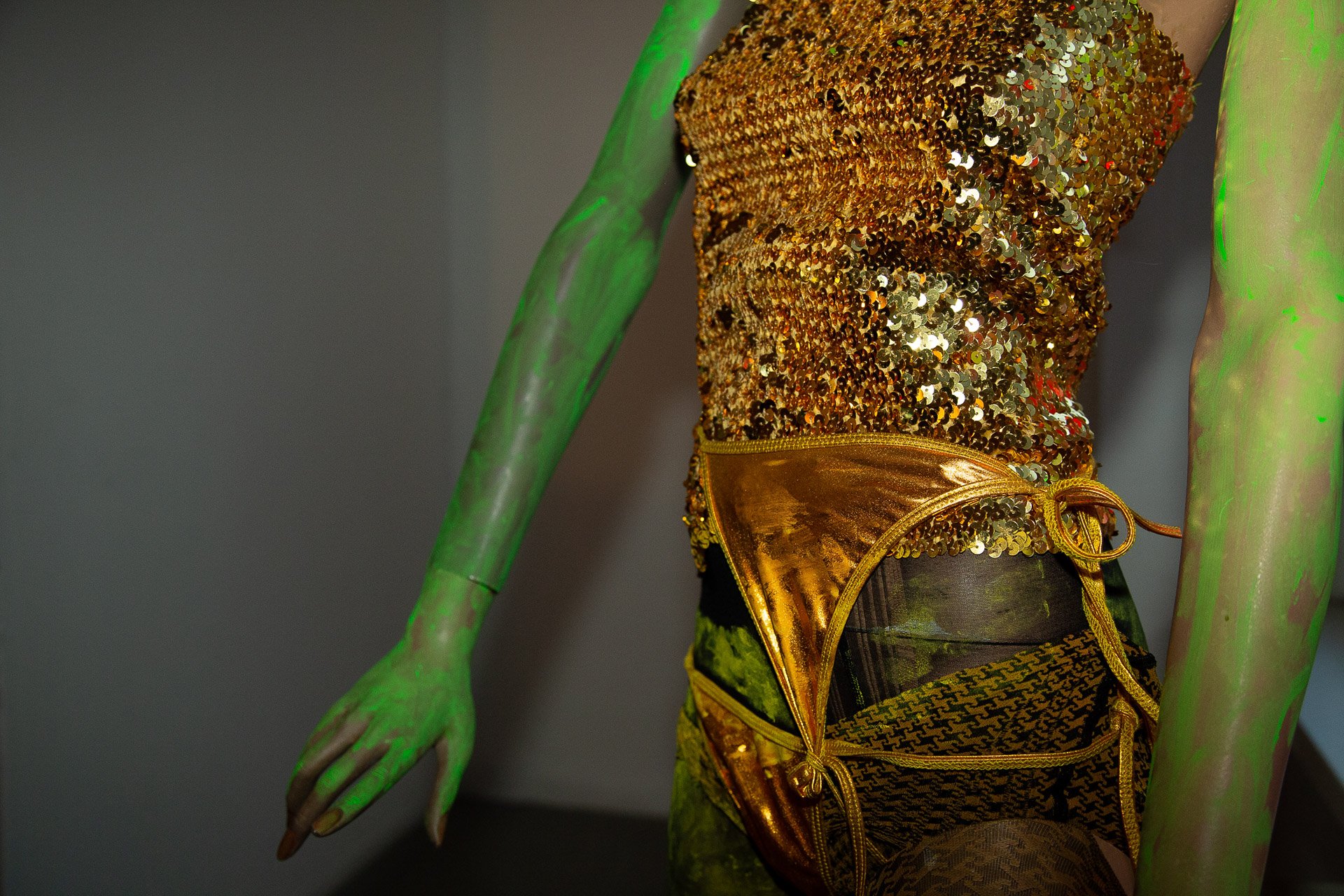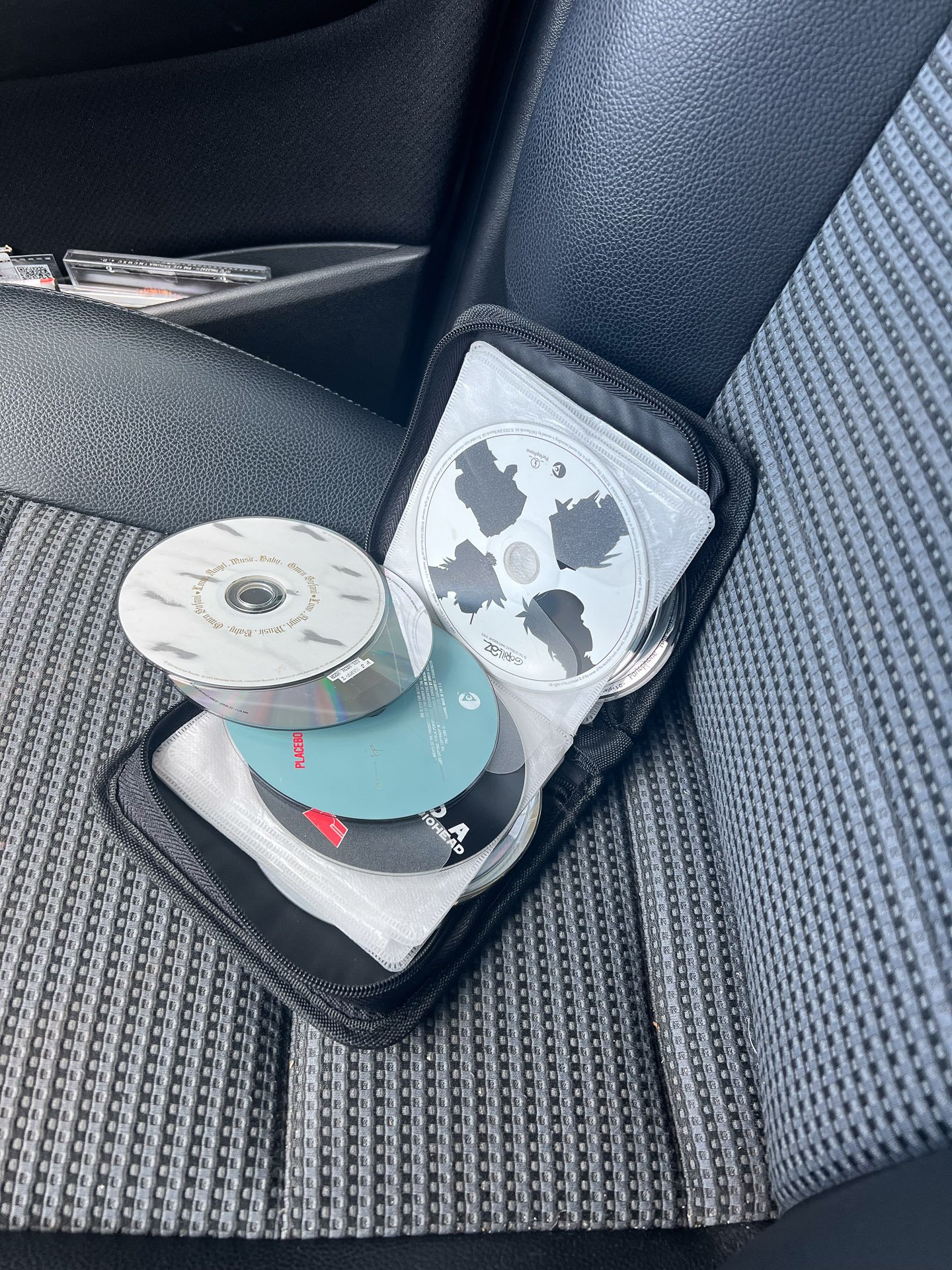A Space with Multiple Layers: Johanna Odersky releases "The Itch"
Images: © Bahar Kaygusuz / Johanna Odersky
Interview: Marc Jauss
Read the German version
A SPACE WITH MULTIPLE LAYERS:
JOHANNA ODERSKY RELEASES "THE ITCH"
Just moments away from Johanna Odersky's album launch and the multifaceted exhibition set to grace Berlin's Projektraum Ashley, I found myself immersed in conversation with the artist and musician at her studio nestled outside the bustling city. Together, we embarked on a journey exploring the nuances of spaces, emotions, and the transformative effects of sampling on her artistic practice.
Marc Jauss: Where are we located right now?
Johanna Odersky: We are in my art studio in Französisch Buchholz, Berlin.
MJ: What are the themes you are currently exploring in your work?
JO: In recent years, I have been oscillating between a sculptural and a musical practice. These two approaches are increasingly converging, but they also fundamentally differ in the social spaces they evoke and the economies that emerge around them. In my work, I am particularly interested in spatial systems that do not rely on predefined or fixed conditions but rather dynamically emerge from within themselves. I explore this interest both sculpturally and sonically.
MJ: Could you elaborate on that a bit more?
JO: For example, my paintings, which I create on folded canvases, lack perspective or clear linearity. Instead, they embody a kind of gravity that stretches and collapses the pictorial space within itself. Similarly, I view my musical compositions as continuously unfolding spaces. I use repetitive textures and samples, layering them into a dense sensory mesh that feels like it could keep expanding indefinitely. However, for my album "The Itch," I experimented with something new. I set out to create a pop production, so the tracks on the album were intended to sound more polished and "complete."
MJ: Are there also days when you have a clear intention of what you want to work on? What are your impulses?
JO: It is definitely very intuitive. I usually wait for an occasion to realize my work. If no current project is lined up, I mainly collect materials: objects, images, textiles, melodies, words... Things that, due to their nature, spark interest or have emotional significance for me. When preserved, they contain a thought or a feeling until I use them again in a new context. Just like sampling in music, I also enjoy mixing material "clippings." This often results in my sculptural works.
MJ: Your new album "The Itch" was recently released at Ashley in Berlin. What themes did you explore during its creation?
JO: Conceptually, with "The Itch," I wanted to create a tension between two contradictory desires. On one hand, the album describes the desire to escape one's own existence, while on the other hand, it also contains a longing for grounding and connection. This dissonance permeates all the tracks and "itches" the listeners.
MJ: What were your experiences with the lyrical aspect? How have your song lyrics evolved?
JO: I always find it very challenging to work with language or to write text from scratch. That's why I also used some form of sampling for the lyrics. I created a very long text document with words, sentences, and language fragments from various sources. Sometimes they were simply lyrics that I misunderstood from other songs. I find it interesting how the meaning and the sound aspect of language can create new associations that deviate from, or support the original meaning. Once enough text had accumulated, I spent a long time experimenting with it, combining and replacing different parts.. until I liked how the words sounded and the meaning they took on as a result.
MJ: Which aspects were important to you when conceptualizing the show?
JO: Because it was a self-release, I was fortunate to have a lot of freedom in shaping the release. I wanted the album to be experienced on different sensory levels, and what I found particularly interesting was seeing how different physical, mental, and social spaces can emerge through the music.
On a musical level, "The Itch" is highly emotionally charged, describing the feeling of being lost in space and time. It represents a dissociative state of being that breaks with shared reality and attempts to piece it back together through melodically recurring memories.
The exhibition at the Ashley project space, on the other hand, was a physical mise-en-scène of the album and literally served as a stage. It opened with a live performance of the music from "The Itch" and aimed to redirect attention to the body as a site of physical and emotional experience with the stage presence of "Iku." Alongside the album's launch, sculptures were exhibited, incorporating textiles, light, and sound. Together, these elements formed a backdrop reminiscent of music venues such as clubs or concert venues, thus incorporating them into the exhibition space.
A website is currently being developed as well. It will serve as documentation of the event at Ashley and as an audiovisual listening room. Through videos, photos, and 3D scans, I want to incorporate the physical elements of the exhibition, although the communal aspect of the event will be absent, resulting in a virtual reflection of the project.
MJ: Since we’re talking about spaces, in which spaces do you feel comfortable?
JO: I feel most comfortable in spaces that have a material familiarity to me. I enjoy having objects around me that feel like an extension of myself. Finding the sensual connections to these places and rediscovering my traces within them gives me a sense of continuity.
MJ: Your concert "Confinement in D minor" from the Covid year 2021 comes to mind...
JO: "Confinement in D minor" was originally developed as an online performance for Club Quarantine, an online dance party that provided a digital space for the queer community during the COVID-19 pandemic. At that time, most of us were in quarantine, so I filmed the video alone from my apartment. I was interested in the intimacy that arises when you get a glimpse into someone's "home." Although it seems very important to me, I often find it difficult to establish this kind of closeness during live performances.
MJ: You often design your own outfits for your performances. What role does fashion play in your shows?
JO: I have always enjoyed playing with fashion and "dressing up," and through my performances, it has naturally integrated into my practice. I am particularly fascinated by the sensory aspect of fashion and textiles. I love the tactile experience of touching fabrics, building volume through layers, and combining patterns and textures. It also reflects, in a way, my music production, which is heavily influenced by the idea of layering.
MJ: What was your worst live experience?
JO: As a child, I learned to play the piano, and there were school events where students performed for their parents. I never really had any issues with it until one day, despite being well-prepared, I had a blackout on stage. I couldn't even remember the first note. Since then, I have had crippling stage fright before every performance.
MJ: And were you able to develop a technique that helps you relax?
JO: It may help a little to embody a "character." For me, this primarily happens through the costumes. Despite the fear of being on stage, I also find that the performances have allowed me to undergo a valuable growth. Through stage presence, I have developed a sense of curiosity towards the stage and its inherent possibilities, which I have further explored through my sculptural works.
MJ: Are there people from your surroundings that you would like to mention at this point? Who are you currently collaborating with?
JO: I find all of my friends to be fascinating and inspiring, and it's always wonderful when we can work together on something. For example, "The Itch" allowed me to collaborate with Joon Yeon Park, who designed the cover artwork. I'm a big fan of Joon's paintings, prints, and patchworks. Her works have a playful character through the use of patterns, decoration, and ornamentation, yet they also reveal a remarkably meticulous technique.
Over the past two years, I have been working with François Pisapia on an audiovisual performance that has greatly influenced the development of the album. François works with video, photography, and text, and I am continually amazed by his ability to seamlessly blend elements of documentary and fantasy. It's a delicate approach to the given, resulting in a closeness that is palpable for the viewers.
Currently, I am collaborating with Yong Xiang Li on a soundtrack. Although he primarily works with painting and sculpture, music videos occasionally find their way into his artistic practice as well. As the work is still in progress, I can't share much about it, but we are producing cover song with reworked lyrics. Similar to how Yong Xiang imbues existing song lyrics with new meanings in his videos, he also constructs skillful and humorous reformulations of cultural and historical narratives in his painting and sculptural works.
Weaving wistful, introspective lyrics into a densely layered landscape of samples and sonic textures, “The Itch” interrupts reality and inserts an altered state of being—outside consensual time and space—in the here and now. If reality posits a stable relation between body, consciousness, and environment, “The Itch” longs for its reversal: An oscillating movement, floating without ground, piecing reality back together through melodically recurring memories. In another register, one would call this desire. In yet another, the virtual.














